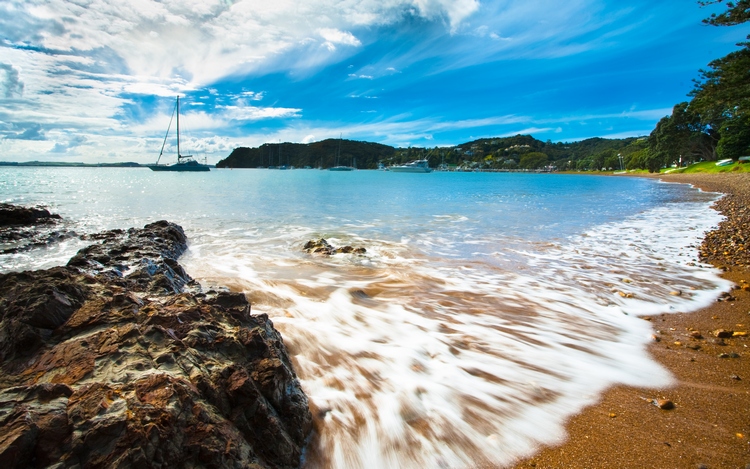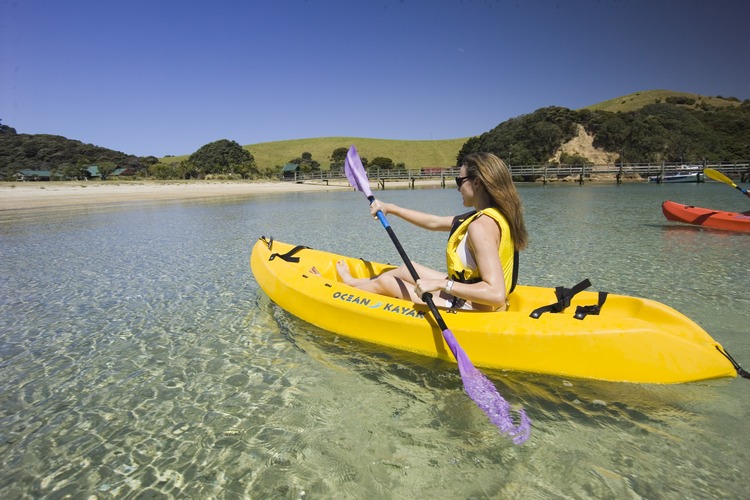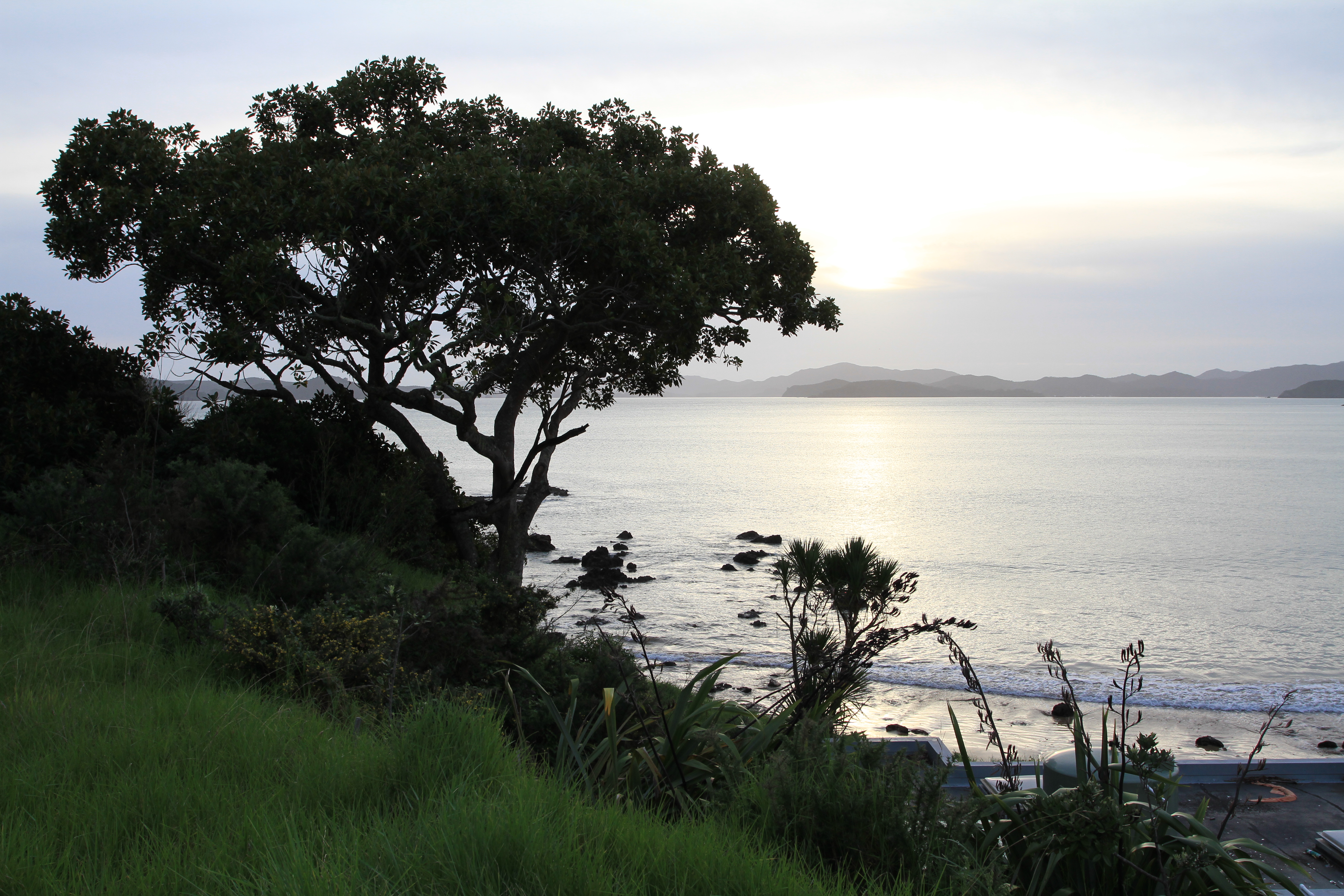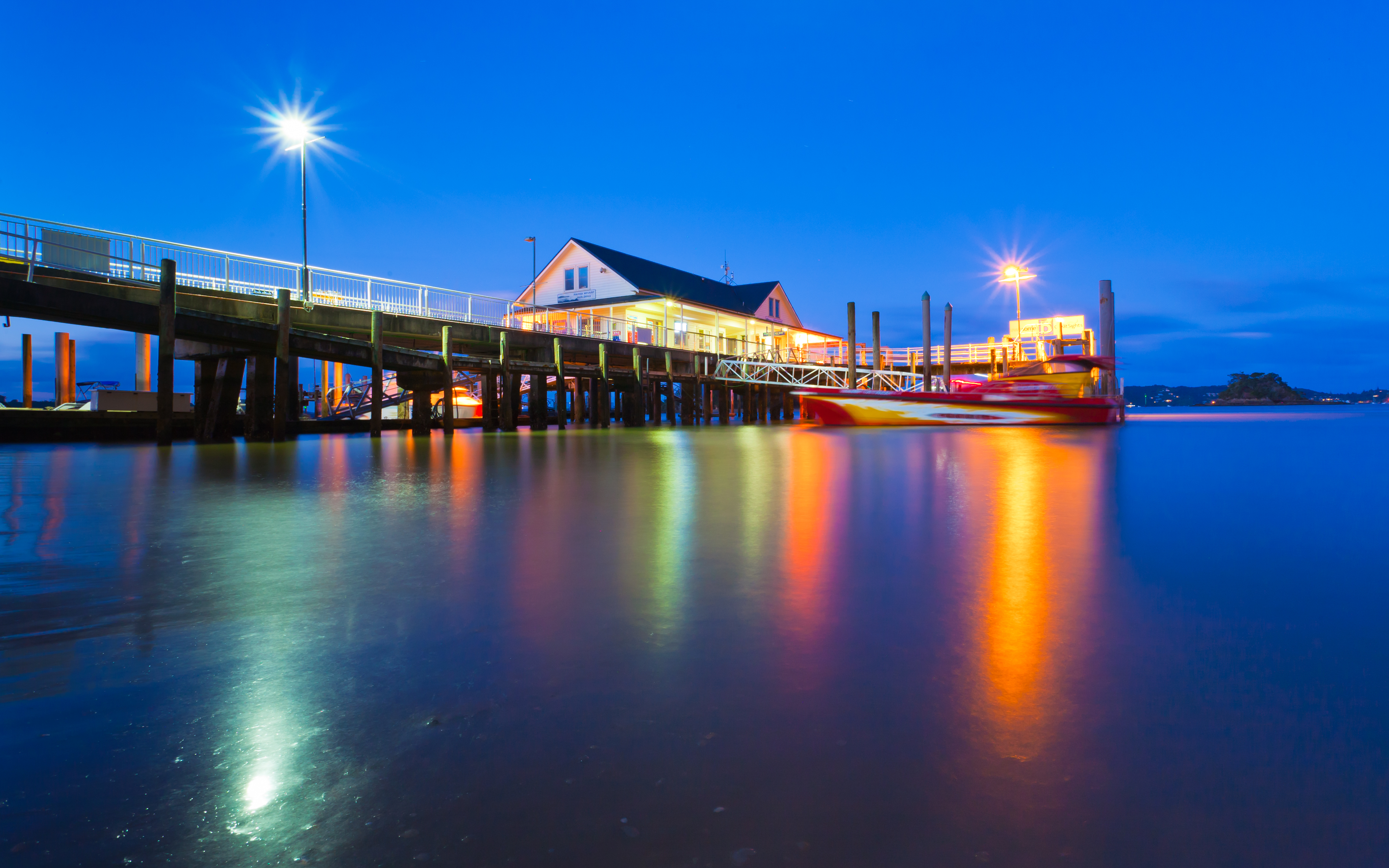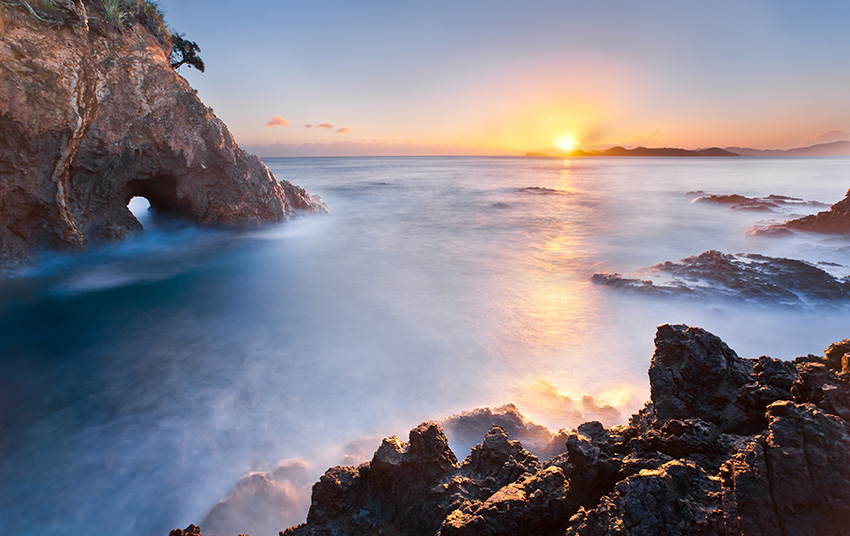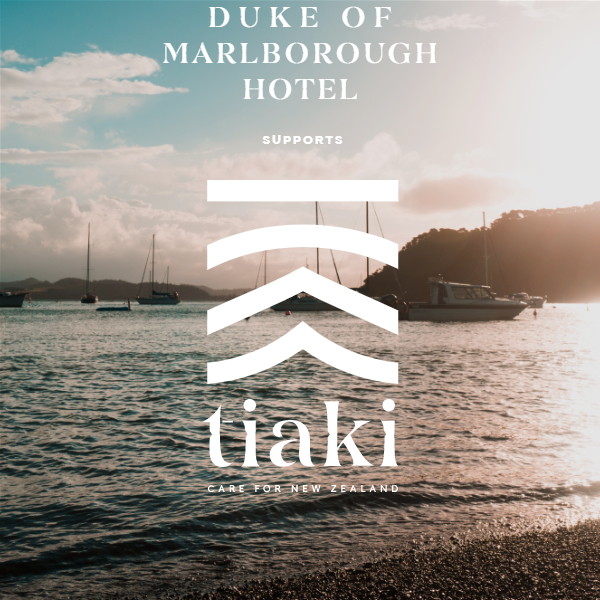Wedding Traditions and Superstitions
Kororareka, the original name for Russell and New Zealand’s first European settlement is considered by many to be the true birthplace of this great nation. Battles have been waged, treaties have been signed and legends have been created here.
Nicknamed the ‘Hell hole of the Pacific’ in the 1800’s, Russell has always been a place of stories, rumours, characters and tall tales. Still attracting visitors from all corners of the globe, the town reminds us that yesterday’s values live on, as does the spirit of adventures past, present and future.
It is this history, this quirky timelessness that has helped to make it such a popular destination for weddings. Couples tying the knot here seem to add their own personal thread to the rich tapestry that exists here, Russell becomes a part of their union as they become a part of Russell’s.
Speaking of history, many of those little sayings and traditions associated with getting married have interesting beginnings from days long gone. The way superstition and folklore still plays a role in todays weddings in fascinating and I love sharing the meanings I have discovered.
Although these wedding ceremony and reception traditions are often based on symbolism, superstition, folklore, religion, and even the fear of ‘evil spirits’ Incorporating some of these traditions into a wedding day is a wonderful and fun way of celebrating and recognizing the historical importance of marriage within a modern context.
There are of course a few competing explanations to these traditions and while quite a few can be traced back through historical evidence, many are simply labelled as ‘old wives tales’. Here are a few of my favorites.
Best Man. In ancient times, men sometimes captured women to make them their brides. A man would take along his strongest and most trusted friend to help him fight resistance from the woman’s family. This friend, therefore, was considered the best man among his friends. In Anglo-Saxon England, the best man accompanied the groom up the aisle to help defend the bride.
Bride on Groom’s Left. According to various sources, some of the early marriages were literally carried out by the Groom and his "Bridesmen" (or "Bridesknights") who would kidnap a woman (the origin of "carrying a Bride over the threshold") from another tribe! The Groom and his fellow conspirators would then fight off the female's family of tribesmen with swords held in their right hand while the Groom would hold the captured Bride in his left hand, which is the origin of why a Bride stands on the left side of the Groom at a wedding.
Because grooms in Anglo-Saxon England often had to defend their brides, the bride would stand to the left of her groom so that his sword arm was free.
In Sweden, they conjured little tricks to make sure the wife has the upper hand in marriage.
1. A bride must try to see her bridegroom before he sees her; then she will be in charge of things.
2. For the same reason, she needs to keep at least one foot in front of his during the ceremony...
3. Then she has to be quick and sit down first at the wedding banquet.
4. And finally, she should drop something, as if by accident. Then her groom will bend over to pick it up, and she will have assurance that he will “bend his back to her will” the rest of the marriage.
Bouquet. Wedding bouquets were originally made of such strong herbs as thyme and garlic, which were meant to frighten away evil spirits, protect against infections such as the plague, and to cover the stench emitting from people who had not bathed recently!
The choice of flowers in the bouquet is not only for their prettiness but are often chosen for certain symbolic meanings e.g. beauty, fidelity, innocence, wisdom, love etc. Check out our next blog on the meaning of flowers.
Bouquet Toss. In ancient times, it was believed that a Bride was especially lucky on her wedding day. Guests would sometimes tear at her dress for a souvenir piece of good luck to take home. The Bride's tossing of her bouquet grew from her desire to offer a good luck souvenir, and prevent guests from bothering her (and her dress!) during her reception.
Bridesmaids. Early Brides and Bridesmaids wore similar dresses in order to confuse evil spirits.
Bridal Shower. Back in the days when weddings were arranged by family members, it is said that a poor Dutchman fell in love with a girl whose father refused her a dowry. Their friends showered her with enough gifts to help them start a household. According to another story, the first "Bridal Shower" occurred at the end of the 19th century. At a party, the Bride's friends placed small gifts inside a parasol and opened it over the Bride's head. When she opened the parasol, she was "showered" with presents!
Bridesmaids and ushers. Bridesmaids and ushers originate from the Roman law that demanded ten witnesses be present at a wedding in order to dupe evil spirits who were believed to attend marriages with the view to causing mischief and disharmony. The bridesmaids and ushers all dressed in identical clothing to the bride and groom so that the evil spirits wouldn’t know who was getting married. This explanation ties in with the bride’s veil being an anti evil spirit device!
Bridal Veil. When marriages were arranged by family members, the newlyweds very rarely were allowed to see one another. Family members exchanging a dowry were afraid that if the Groom didn't like the appearance of the Bride's face, he might refuse to marry her. This is why the Father of the Bride "gave the Bride away" to the Groom at the actual wedding ceremony. Only after lifting her veil just prior to the ceremony did the Groom see the Bride's face for the first time! Early Greek and Roman Brides wore red or yellow veils to represent fire, and to ward off demons.
The origin of the wedding veil is unclear but it is thought that it predates the wedding dress by centuries. One explanation is that it is a relic of the days when a groom would throw a blanket over the head of the woman of his choice when he captured her and carted her off. Another explanation is that during the times of arranged marriages, the bride’s face was covered until the groom was committed to her at the ceremony – so it would be too late for him to run off if he didn’t like the look of her! It is also thought that the veil was worn to protect the bride from evil spirits that would be floating around on her wedding day.
These origins have all evolved into the tradition that the veil covers the bride’s face throughout the ceremony until the minister pronounces the couple man and wife – although today, the veil is often lifted by the bride’s father when the bride arrives at the altar.
Burying the bourbon. Couples bury a bottle of bourbon at their ceremony venue precisely one month before their wedding date so it won't rain on their day. According to folklore, if you don't follow this tradition to a T, it may downpour. The rules: The bottle must be completely full and sealed (no taste testing!) and buried upside down as close as possible to where you'll say your vows. Then on the day of—and this, of course, is very important—you're supposed to dig it up and enjoy with your wedding party during the reception.
Carrying the Bride Over The Threshold. When a Groom used to steal his Bride from her tribe, he was forced to carry her kicking and screaming. This act of thievery has evolved into a more romantic gesture, welcoming the Bride into her new home.
There seems to be two explanations for this tradition.
The first is to protect the bride from evil spirits that were thought to be lying in wait under the threshold. The second explanation relates to Roman times when it was believed that if the bride stumbled when entering the newlywed’s home for the first time, it would bring bad luck and harm to their marriage. So carrying the bride across the threshold would prevent this from happening (although we haven’t established the likely outcome to the marriage if the groom stumbled while carrying the bride!).
Day and Date When Couples Get Married. Ancient Greeks used pig entrails to determine the luckiest day to marry!
The Japanese traditionally looked to an ancient astrological calendar for propitious days.
In early U.S. history, Wednesday was the luckiest day for weddings. Friday was avoided as the “hangman’s day.”
Sunday used to be a popular wedding day; it was the one day most people were free from work. Puritans in the seventeenth century put a stop to this, believing it was improper to be festive on the Sabbath. Today, Saturdays are busiest due to working week commitments, despite this old rhyme:
Monday for health, Tuesday for wealth, Wednesday best of all, Thursday for losses, Friday for crosses, Saturday for no luck at all.
First on the dance floor. The “first dance” of a married couple is a popular element at many post-wedding celebrations, not just here in Russell, but in modern traditions throughout the world. Exactly like an old-fashioned ball, the idea is that the married couple, as the guests of honour at a dance, open the dancing.
Sometimes, to further the traditional gender roles of father-daughter relationships in weddings (similar to ‘giving away’) the bride and father of the bride may share a dance either as the first dance or after the husband-wife one.
In the past, the first wedding dance was commonly a waltz. In modern times ballroom dancing is no longer a widespread skill, and rehearsing the “first dance” has become a lucrative business for dance studios and independent dance instructors. Today around New Zealand more popular dances include the foxtrot, merengue, and swing. Alternatively, many couples just do a “slow dance”. More recently, some couples have been known to introduce a surprise into their dance to shock and humour their audience e.g. by dancing to a song in a mock disco style and send the frivolity to the Social Media audiences.
Garter. Brides originally tossed a garter, rather than a bouquet, at a wedding reception. In the 14th century, this custom changed after Brides became tired of fighting off drunken men who tried to remove the garter themselves! According to one legend, the garter toss in England evolved from an earlier tradition of "flinging the stocking". On their wedding night, guests would follow the Bride and Groom to their bedroom, wait until they undressed, steal their stockings, and then "fling" them at the couple! The first person to hit the Bride or Groom on the head would supposedly be the next person to marry!
Giving Away the Bride. The tradition of the father giving away his daughter has its roots in the days of arranged marriages. Daughters in those times were considered their father’s property. It was the father’s right to give his child to the groom, usually for a price. Today a father or mother giving away their daughter is a symbol of their blessing of the marriage.
Hen Party. Prior to its usage as a term for a pre-wedding party "hen party" was used in the United States as a general term for an all-female gathering usually held at a hostess's residence. In 1897, The Deseret News noted that "hen party" was a "time honoured idea that tea and chitchats, gossip smart hats, constitute the necessary adjuncts to these particular gatherings". Nowadays it takes on the similar traits of a stag night, involving more alcohol than tea!!
Honeymoon. In parts of Europe it was once not unusual for the groom to kidnap his bride to be and keep her hidden for one month - one moon - until she became his wife. To ensure she stayed she would be made to drink metheglen, which was a honey sweetened alcoholic brew that effects both sobriety and the acidity of the womb, thus increasing fertility. Therefore ‘honeymoon’. The Irish translation for "honeymoon" is mi na meala, - the month of honey.
Leap year proposals. The right of every women to propose on 29th February each leap year, goes back many hundreds of years to when the leap year day had no recognition in English law (the day was ‘lept over’ and ignored, hence the term ‘leap year’). It was considered, therefore, that as the day had no legal status, it was reasonable to assume that traditions also had no status. Consequently, women who were concerned about being ‘left on the shelf’ took advantage of this anomaly and proposed to the man they wished to marry. It was also thought that since the leap year day corrected the discrepancy between the calendar year of 365 days and the time taken for the Earth to complete one orbit of the sun (365 days and 6 hours), it was an opportunity for women to correct a tradition that was one-sided and unjust.
Money Dance.​ According to one custom, when arranged marriages were common, the Groom collected a dowry only after his marriage was consummated. The money dance insured that the couple would have some money before they left their wedding reception. According to another wedding tradition, the people of the village gave gifts of pottery, livestock, and garden plants to the newlyweds because the Bride and Groom had no money to acquire these items until they had children, after which a dowry was exchanged.
Penny In Shoe. This is a European tradition to bring the Bride good luck, fortune, and protection against want. After the Wedding Day, the lucky penny can be turned into a piece of jewellery as a pendant, charm for a bracelet, or ring setting.
Ring Finger. Prior to the 5th century, the ring finger was actually the index finger. Later, it was believed that the third finger contained the "vein of love" that led directly to the heart.
Shoes and tradition of having them on a vehicle. The tradition of tying shoes to the bumper of the newly wed’s car has various believed origins ranging from the times of marriage by capture, with the bride’s father throwing his shoe in anger at the escaping groom and his stolen bride to the notion that leather had the quality to protect against evil spirits and the tying of shoes to the back of the newly wed’s transport would deter them from interference.
Another belief is that shoes symbolise fertility (hence why Mother Goose’s little old woman lived in a shoe).
The exchange or throwing of shoes once symbolised the fulfilment of a bargain, which, in the case of marriage in Ancient Roman times, transferred the father’s authority over the bride to her new husband when he gave the groom her shoes.
The Bride’s father would give the groom one of her old shoes and the groom would tap the bride over the head with it, symbolising the acceptance of his new authority.
It was also considered to bring good luck to the bride and groom if their guests threw shoes at them, although one can only hope that their aims weren’t too accurate. If the bride throws her shoe, it was thought that the one to catch it would be the next to marry, rather like the throwing of the bouquet. Finally, it was also considered lucky to get married in a pair of old shoes.
Something Old, Something New, Something Borrowed, Something Blue, and a Sixpence in Your Shoe. This superstition of the Bride wearing something that fits each of these five categories originated in Victorian times to ward off evil spirits.
“Something old” represents the bride’s link to her family and the past. The bride may choose to wear a piece of family jewelry or her mother or grandmother’s wedding gown. “Something new” represents hope for good fortune and success in the future. The bride’s wedding dress is usually chosen, if purchased new, but it can be any other new item of the bride’s wedding attire.
“Something borrowed” usually comes from a happily married woman and is thought to lend some of her good fortune and joy to the new bride. Something borrowed could be an item of bridal clothing, a handkerchief or an item of jewellery.
“Something blue” …..In ancient Israel, blue was the border colour of the Bride's dress, symbolizing purity, constancy and fidelity. Wearing something blue dates back to biblical times when the colour blue was considered to represent purity and fidelity. Over time this has evolved from wearing a blue clothing to wearing a blue band around the bottom of the bride’s dress and to modern times where the bride wears a blue or blue-trimmed garter.
“A sixpence in her shoe” is to wish the bride wealth in her future life.
Placing a silver sixpence in the bride’s left shoe is a symbol of wealth. This is not just to bring the bride financial wealth but also a wealth of happiness and joy throughout her married life.
Stag Parties.​ This is the male equivalent of the Bridal Shower. Roman empire soldiers would feast with the Groom the night before his wedding to say goodbye to his irresponsible days of bachelorhood, and to renew their vows of allegiance to their friendships.
The meaning of “Bride”. The word bride comes from old English being a name for ‘cook’, which explains a lot! While groom originated from ‘male child’, it would be logically to think that bridegroom meant male cook. But it does not. Instead, bridegroom is a Germanic word meaning exactly what is appears to mean – simply, the man who is marrying the bride.
Tossing the Bouquet. Tossing the bouquet is a tradition that stems from England. Women used to try to rip pieces of the bride’s dress and flowers in order to obtain some of her good luck. To escape from the crowd the bride would toss her bouquet and run away. Today the bouquet is tossed to single women with the belief that whoever catches it will be the next to marry.
Throwing confetti. The origin of throwing confetti over newly weds predated Christ since it originates from the ancient Pagan rite of showering the happy couple with grain to wish upon them a ‘fruitful’ union. Pagans believed that the fertility of the seeds would be transferred to the couple on whom they fell. The throwing of rice or birdseed [where permitted] has the same symbolic meaning. Incidentally, it is not true that birds eating rice thrown after a wedding ceremony will cause their stomachs to enlarge and eventually explode. This myth may have simply evolved from church and synagogue employees weary from cleaning up after every wedding ceremony!
The word confetti has the same root as the word ‘confectionery’ in Italian and was used to describe ‘sweetmeats’ that is, grain and nuts coated in sugar that were thrown over newly weds for the same Pagan reason. In recent years, small pieces of coloured paper have replaced sweetmeats, grain and nuts as an inexpensive substitute but the use of the word confetti has remained.
Confetti is now available in a wide range of colours and designs to match your wedding theme. Despite the longevity of this tradition, it is on the verge of extinction because the throwing of confetti is not permitted at most register offices and churches due to the mess it makes. However, the tradition survives by throwing biodegradable rose petals and the recent introduction of wedding bubbles, which provides an environmentally safe alternative.
Tuxedo.Until the 20th century, the Groom simply wore his "Sunday best" on his wedding day. It is said that President Teddy Roosevelt popularized the modern tuxedo.
Tying The Knot. This comes from the days of the Roman empire when the Bride wore a girdle that was tied in knots. The Groom untied the knots prior to the consummation of their marriage.
Wedding Cake. The wedding cake has a rich symbolic history of its own that is relatively forgotten today. The ancient Greeks threw cakes at the newly married couple, just as we throw confetti today. In Roman times, at the marriages of the upper classes, cakes made of flour, salt and water would firstly be shared by the bride and groom, which was thought to promise the couple a life of plenty, in both children and happiness. The remainder was then broken over the bride’s head. The guests, believing they would share in the blessing it symbolised, would rush forward to procure a morsel for themselves. Furthermore, it was only the children born to a marriage sanctified in this way that qualified for the high sacred offices in Roman life, hence, not only did the cake provide the couple with future fertility, but also it promised their yet unconceived children with a propitious future.
A huge basket of dried biscuits was provided at the wedding ceremonies of the early Anglo Saxons where the guests would take one each and the remainder was shared amongst the poor. However, in later times the wedding guests would bring their own cakes, often spiced buns, which were piled into a huge mound. It was deemed to be good fortune if the bride and groom were able to kiss each other over the mountain of cakes, promising them life-long happiness and good fortune. Legend suggests that at about the time of King Charles II (1630-1685) a French chef, observing the tedious way that all the small cakes were piled on top of each other suggested icing the mound into one mass, out of which grew the traditional French celebration cake called the croquembouche. The many tiered, elaborately iced, traditional wedding cakes of today are based on the unusual shape of the spire of St Bride’s church in London.
In Victorian times, the tradition of breaking the cake over the bride’s head was believed to promote fertility and unmarried girls would pass a piece of the cake through the bride’s wedding ring and place it under their pillow believing that they would dream of their future husband. In more recent times the cutting of the cake, once the sole responsibility of the bride, was symbolic of the bride’s pending loss of virginity, and even now the wedding cake is often still regarded as a symbol of fertility, and its distribution among the guests is symbolic of the sharing of happiness – sharing is regarded as an important feature of all religions, hence the tradition of sending a piece of cake to those unable to attend the ceremony.
Wedding Cake Pull.​ Cake pulling comes from an old Victorian custom of "ribbon pulling." Back then (and still today), brides wanted to bestow good luck and fortune on their single friends, so they placed small charms with different meanings in the wedding cake for them. For example, a telephone means that good news is on the way, and a flower means that a new romance will come soon. Now brides usually attach the charms to pieces of ribbon that are pulled out by members of their bridal party before the cake cutting.
Wedding favours. The tradition of giving your guests something to remember the day by in the form of favours has been around for hundreds of years. Today, the tradition has evolved to giving each guest five sugar coated almonds to symbolise health, wealth, fertility, happiness and long-life. However, during the late 19th century at high society weddings, guests could expect to receive favours such as scarves, garters and gloves. Looking back further, an article in the Caldwell Papers (Scotland) dated 1750, reports:
“The bride’s favours are sewn on her gown from top to bottom, and round the neck and sleeves. The moment the wedding ceremony was performed the whole company ran to her and pulled off the favours; in an instant she was stripped of all of them. The bride’s mother then came in with a basket of favours belonging to the bridegroom; those and the bride’s were the same, with the livery’s of their families, hers pink and white, his gold and blue colour.”
But why almonds? It appears that the association of almonds with love goes back to Greek legend with the story of a young man called Demophon, who met and fell in love with a Tracian princess, Phyllis. However, before the marriage ceremony could take place Demophon is informed that his father has died in Athens and he must return for the funeral. He promises to return by a certain date but errs on the time it will take him and does not return until three months later. By this time Phyllis is convinced that she will never see her lover again and hanged herself. The Gods, touched by her love, transform her into an almond tree. The grief stricken Demophon offered a sacrifice to the almond tree, declaring his undying love. In response, the almond tree blossomed. Impetuous youth and undying love were thus symbolised by the almond. Also, in his writings on natural history in 77AD, Pliny advised that eating five almonds would prevent drunkenness, therefore maybe the giving of the five almonds to wedding guests was to ensure that celebrations did not get out of hand!
Wedding Ring. According to some historians, the first recorded marriage rings date back to the days when early man tied plaited circlets around the Bride's wrists and ankles to keep her spirit from running away. Approximately 3,000 BC, Egyptians originated the phrase "without beginning, without end" in describing the significance of the wedding ring. These rings were made of woven hemp which constantly wore out and needed replacement. Although Romans originally used iron, gold is now used as a symbol of all that is pure. Diamonds were first used by Italians, who believed that it was created from the flames of love.
Although engagement rings have been popular through the ages, it wasn’t until Archduke Maximilian of Austria presented a diamond to Mary of Burgundy in 1477 that the tradition of offering the most enduring gem on Earth took hold. These days, the majority of brides receive diamond engagement rings.
In some European cultures, the wedding ring is worn on the right hand. In other cultures, an engagement ring is worn on the left hand, and the wedding ring is worn on the right hand.
A bride’s engagement ring and wedding ring are traditionally worn on the third finger of the left hand (the finger next to your little finger). Although there is no precise evidence to explain the origin of this tradition, the Romans believed that the ring finger follows the vena amoris, that is, the vein of love that runs directly to the heart.
Wedding Toast. It is said that this tradition first began in France, where bread would be placed in the bottom of two drinking glasses for the newlyweds. They would then drink as fast as they could to be the first person to get to the toast. According to legend, the winner would rule their household!
“Wedlock”. Wed is from old English (wedd) and old Scottish (wad) both meaning to pledge. Lock is old English (lac) and means carrying out an action. Therefore, the meaning of wedlock originally meant pledging property to the bride’s father as payment for his daughter. Today, wedlock simply means the married state especially in the phrase born in wedlock or born out of wedlock, meaning a legitimate or illegitimate birth.
Wearing a white wedding gown. Prior to the 16th century this most important Western European Wedding tradition was not common. To this day a traditional Irish bride often wears a blue wedding dress, rather than a white one. This is because blue symbolized purity in ancient times. It wasn’t until the year 1499 that a white wedding dress began to symbolize virginity and purity when Ann of Brittany popularized the white wedding dress and the tradition became part of Western European wedding culture. Queen Victoria, also chose white instead of the traditional royal "silver" wedding dress.
Why the bride stands on the left. During the marriage ceremony, the bride stands on the left and the groom on the right. The origin of this goes back to the days when a groom would capture his bride by kidnapping her. If the groom had to fight off other men who also wanted her as their bride, he would hold his bride-to-be with his left hand allowing his right hand to be free to use his sword.
Why Different Sides of the Church. Goes back to when tribes had to be kept separate in case they started fighting.

